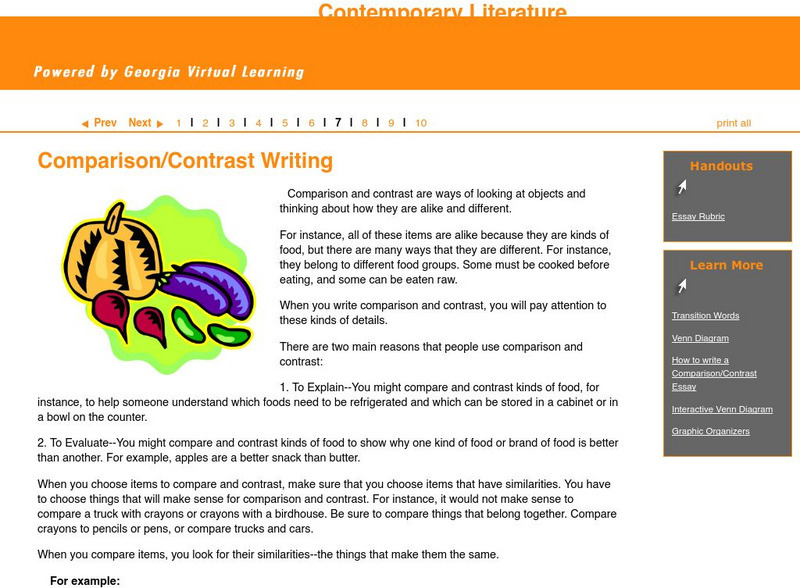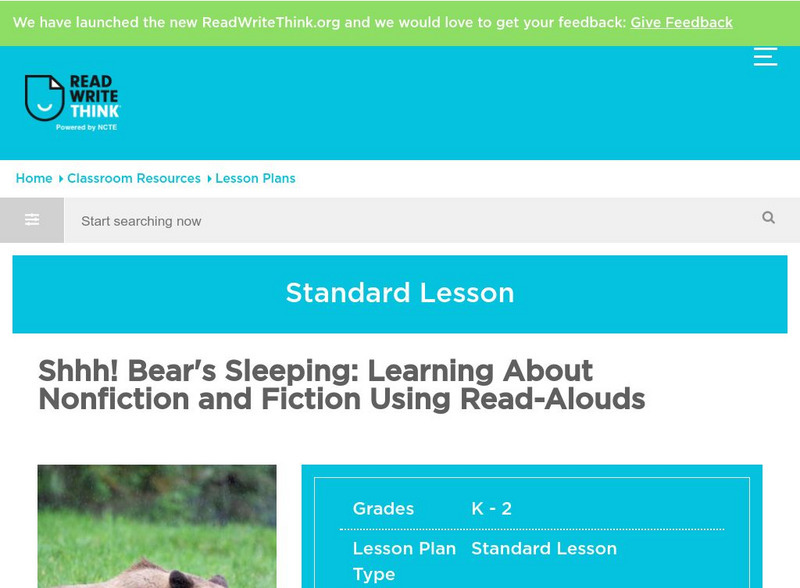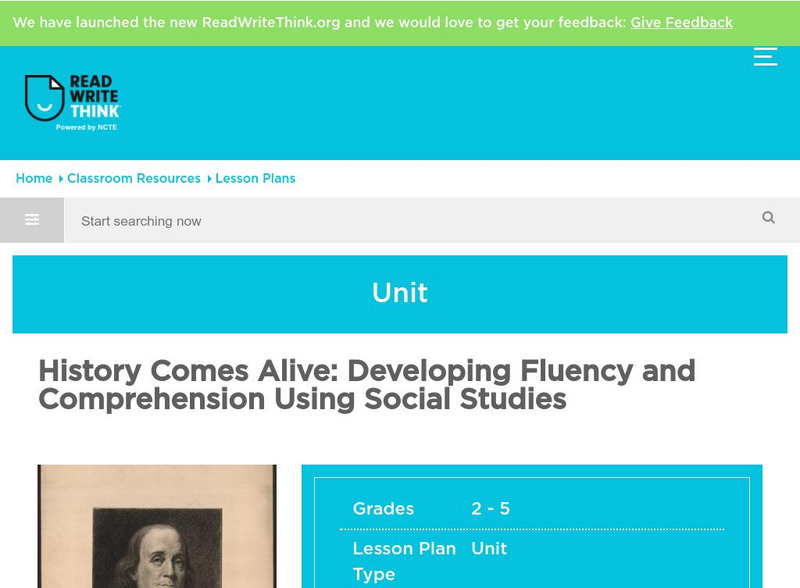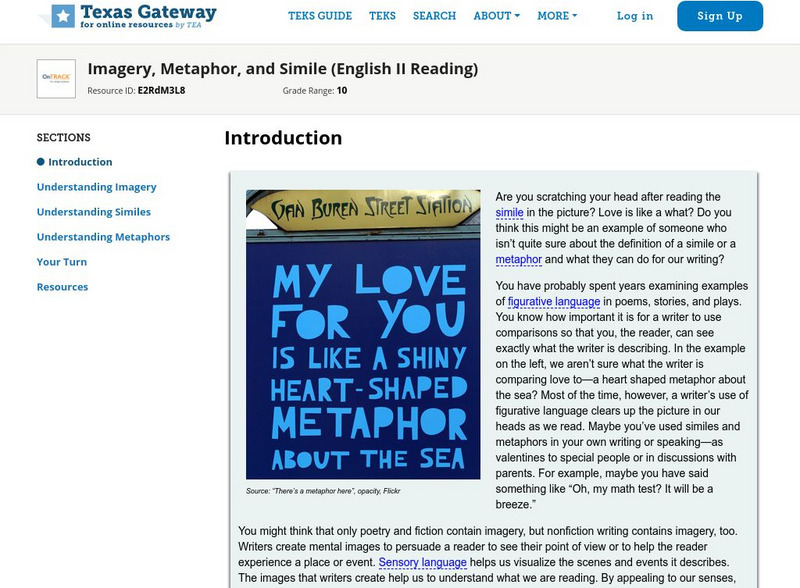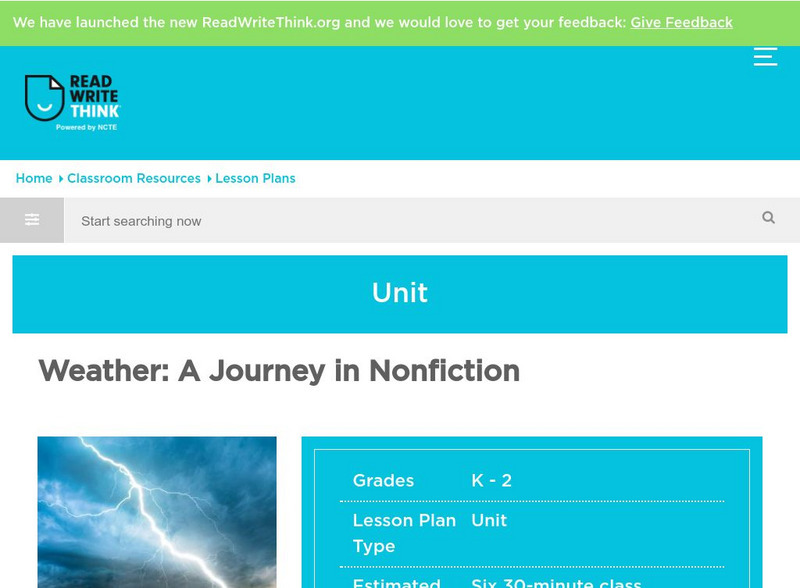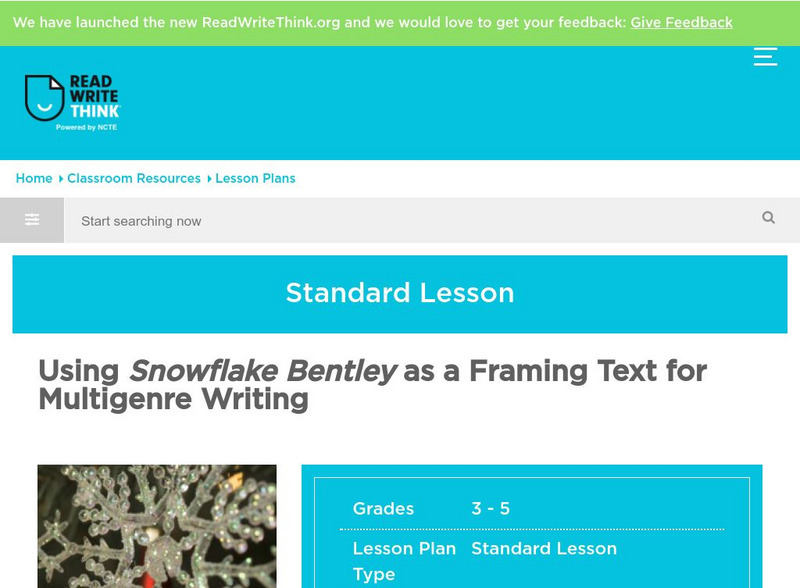Hi, what do you want to do?
Scholastic
Scholastic: Nonfiction Writing Lessons
This series of nonfiction writing lessons was developed by Stuart Miller. Four activities include: Describing the Real World, The Interview, Writing a Profile, and Writing a Review.
Georgia Department of Education
Ga Virtual Learning: Contemporary Literature: Contemporary Nonfiction
This lesson is an introduction to contemporary nonfiction including the definition, types of nonfiction: biographies, autobiographies, memoirs, essays, speeches, and diaries, examples of authors and types, key terms, essential questions,...
Writing Fix
Writing Fix: Question and Answer Books
Beginning writers work through a Writing Workshop format to create Question and Answer books. A series of mini-lessons, graphic organizers, possible texts, and samples of student work are all provided.
Georgia Department of Education
Ga Virtual Learning: Nonfiction and Research: The Research Process: Notetaking
This lesson focuses on taking notes for your research project. It explains what to included in your notes and how to write them. It offers a link to The Quality Writing Center: "Creating and Using Outlines" and Study Guides and...
ReadWriteThink
Read Write Think: Identify, Compare, Write Nonfiction
Lesson that introduces the concepts of nonfiction to elementary students. Through reading and interactive lessons, students engage the genre of nonfiction and begin to write their own examples.
ReadWriteThink
Read Write Think: Reading/writing About Whales Using Fiction and Nonfiction Texts
Young scholars will have a whale of a good time in this lesson in which they use fiction and nonfiction texts to write a letter to an online scientist.
ReadWriteThink
Read Write Think: Reading Informational Texts Using the 3 2 1 Strategy
Students can count on using the 3-2-1 strategy to help them successfully comprehend and write about an informational text.
Polk Brothers Foundation Center for Urban Education at DePaul University
De Paul University: Center for Urban Education: Nutrition Lesson [Pdf]
"Nutrition Lesson" is a one page, nonfiction passage about protein including what it does in the body and what foods contain protein. It is followed by questions which require students to provide evidence from the story; it includes...
Georgia Department of Education
Ga Virtual Learning: Contemporary Nonfiction: Comparison/contrast Writing
This lesson focuses on how to write a nonfiction comparison/contrast paper including the reasons for writing them and the three organizational strategies. It features links to transition words, graphic organizers, Venn diagrams,...
Georgia Department of Education
Ga Virtual Learning: Contemporary Nonfiction: Jfk Speech
This lesson focuses on John F. Kennedy's speech, "We Choose to go to the Moon," delivered at Rice University on September 12, 1962. It features links to JFK's biography and Wikipedia entry, the National Geographic: "Moon 101" video, the...
ReadWriteThink
Read Write Think: Shhh! Bear's Sleeping: Learning About Nonfiction and Fiction
Students explore the distinction between the fiction story Bear Snores On and the nonfiction book Every Autumn Comes the Bear.
ReadWriteThink
Read Write Think: History Comes Alive: Developing Fluency and Comprehension
Let the power of imagination and inference serve as a "time machine" to bring Benjamin Franklin into the classroom! History and science come to life in a dialogue with Franklin the inventor, developed through lesson activities that...
Texas Education Agency
Texas Gateway: Literary Text: Imagery, Metaphor, and Simile
Writers use sensory imagery ("smelled the salty air"), similes ("like a strong man playing tug-of-war"), and metaphors ("the waves roaring in my ears") to capture the reader's imagination. In this lesson, you will learn how to identify...
Austin Independent School District
Austin Independent School District: Summary of Fiction and Nonfiction Text [Pdf]
This 31-page document focuses on teaching summarizing strategies for use with fiction and nonfiction texts. This series of lesson plans starts with fiction summarizing strategies such as "Somebody-Wanted-But-So-Then" and "Story Arch."...
ReadWriteThink
Read Write Think: Weather: A Journey in Nonfiction
Questions about weather clear up when students use what they learned from their books to create a presentation to share with the rest of the class.
ReadWriteThink
Read Write Think: Using Snowflake Bentley as a Framing Text for Multigenre Writing
Using Snowflake Bentley as a model, students create a working definition of multigenre text and then use that definition to create their own multigenre piece about winter or another theme.
ReadWriteThink
Read Write Think: Using Technology to Analyze and Illustrate Symbolism in Night
Images have power-they can trigger memories or symbolize abstract ideas. Middle schoolers put the power of images to the test as they analyze symbolism in Night and create symbolic photomontages.
ReadWriteThink
Read Write Think: Using Comprehension Strategies With Elie Wiesel's Night
Working in small groups, students read and discuss Elie Wiesel's memoir Night and then take turns assuming the "teacher" role, as the class works with four different comprehension strategies.RI.11-12.4 Word meaning, RI.11-12.10b Text...
Alabama Learning Exchange
Alex: Introduction to the Dewey Decimal System
This lesson introduces the Dewey Decimal System of numbering used for arranging nonfiction books on the shelves of an elementary school library.
ReadWriteThink
Read Write Think: Exploring Cross Age Tutoring Activities With Lewis and Clark
Interaction and adventure draws high school and elementary school students together as they analyze stories about the Lewis and Clark expedition.
Georgia Department of Education
Ga Virtual Learning: Anglo Saxon Literature
This lesson focuses on Anglo-Saxon Literature including the importance of the monks who listened to the stories and poems and wrote them down and the two nonfiction pieces that had an impact on creation of the written language: The...
Science Education Resource Center at Carleton College
Serc: Written Assignment Sessions
In this lesson, students read a scientific article, answer a quiz about it, then write a summary.
EL Education
El Education: Tools for Sailors Ahoy, Mate!
In this lesson students learn about sailing and contribute writing, illustrations, and photographs to a class book containing information about navigation equipment, the Beaufort Scale, knots, and the signal system of flags used by...
Sophia Learning
Sophia: Classification Papers: Key Elements
This lesson goes over words, phrases, and key elements that are included in classification papers.






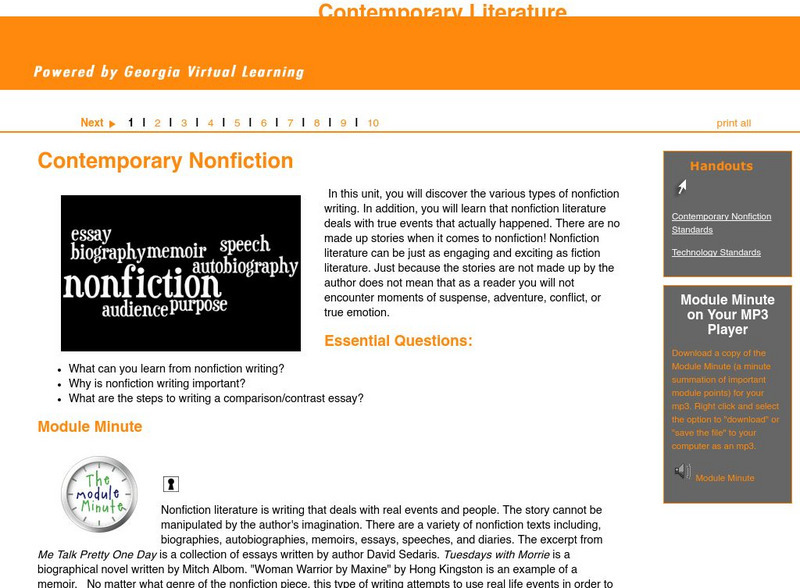
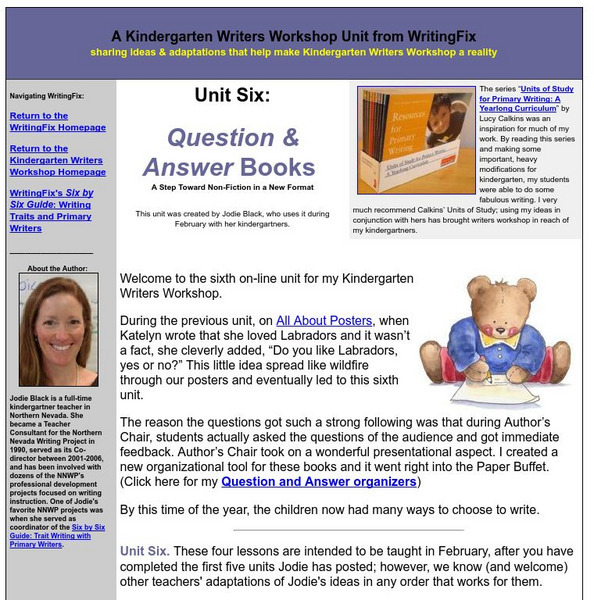
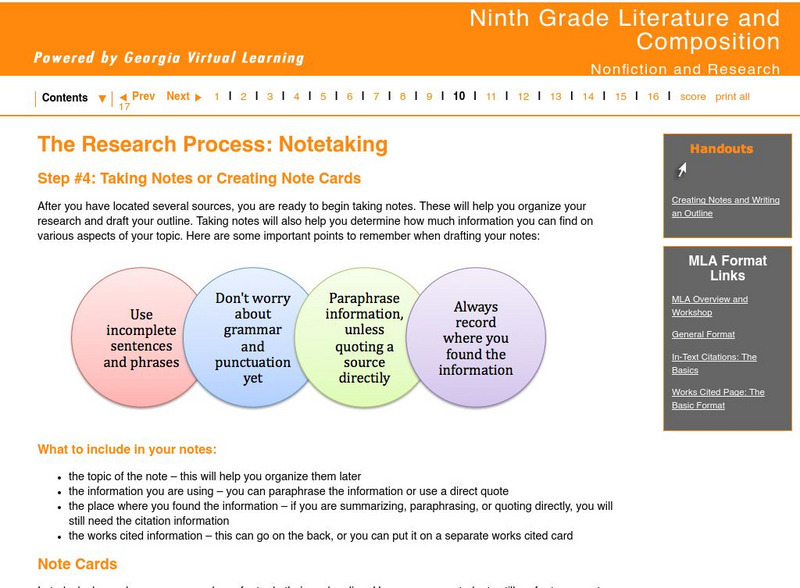



![De Paul University: Center for Urban Education: Nutrition Lesson [Pdf] Unit Plan De Paul University: Center for Urban Education: Nutrition Lesson [Pdf] Unit Plan](https://static.lp.lexp.cloud/images/attachment_defaults/resource/large/FPO-knovation.png)
